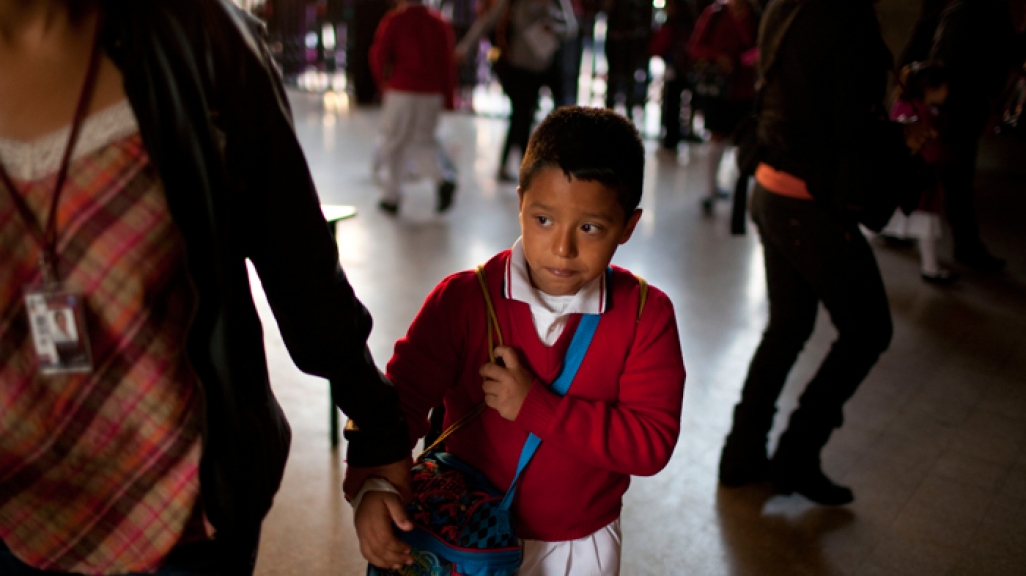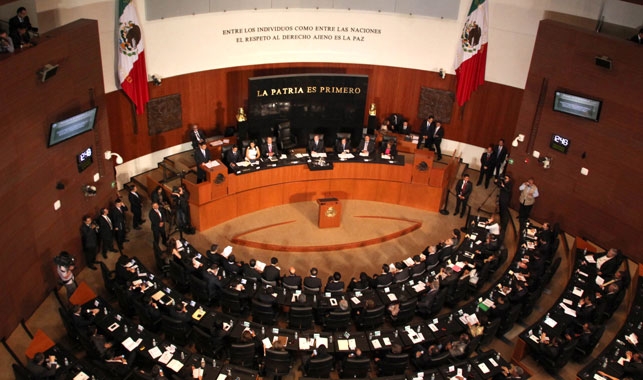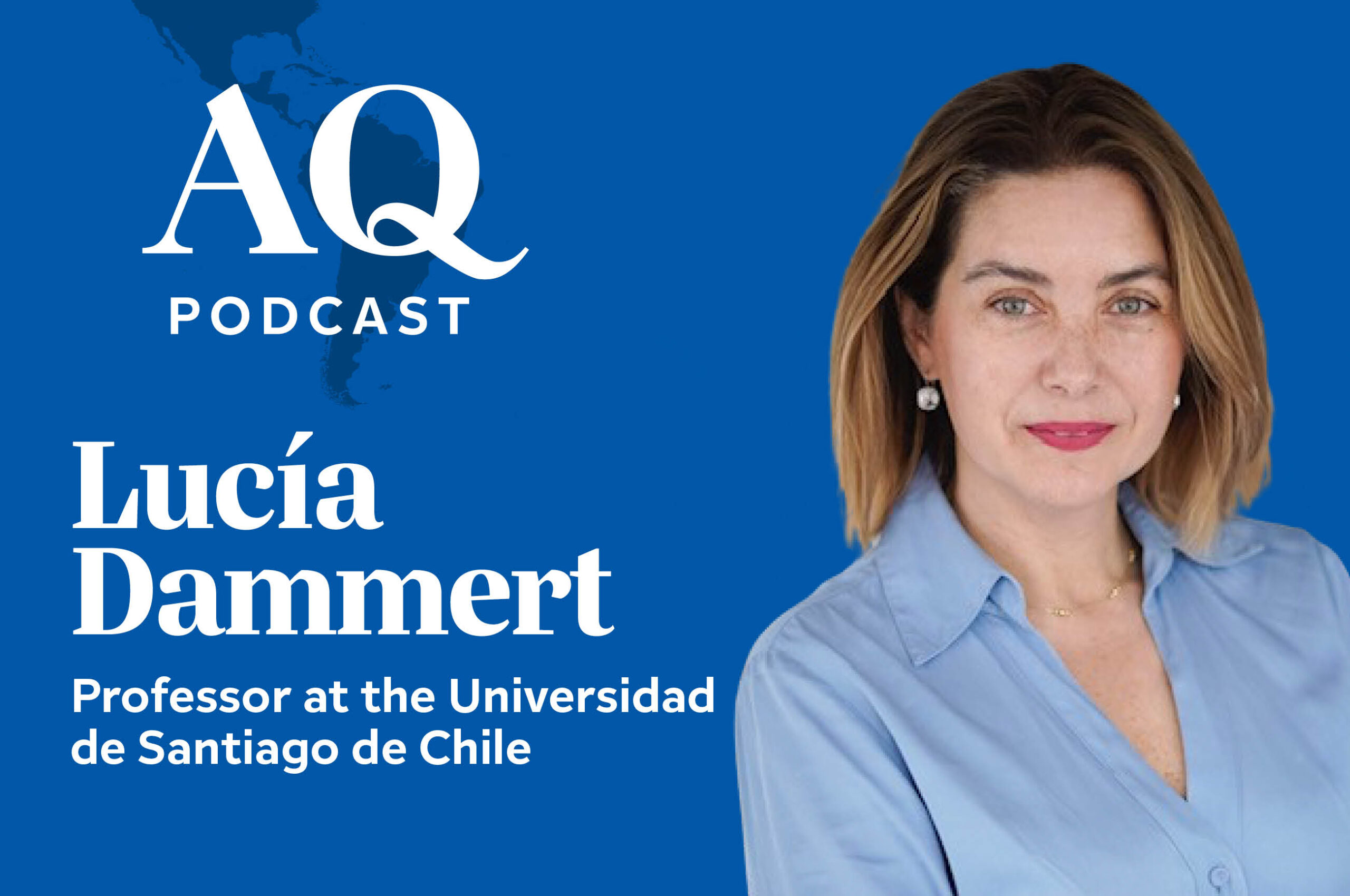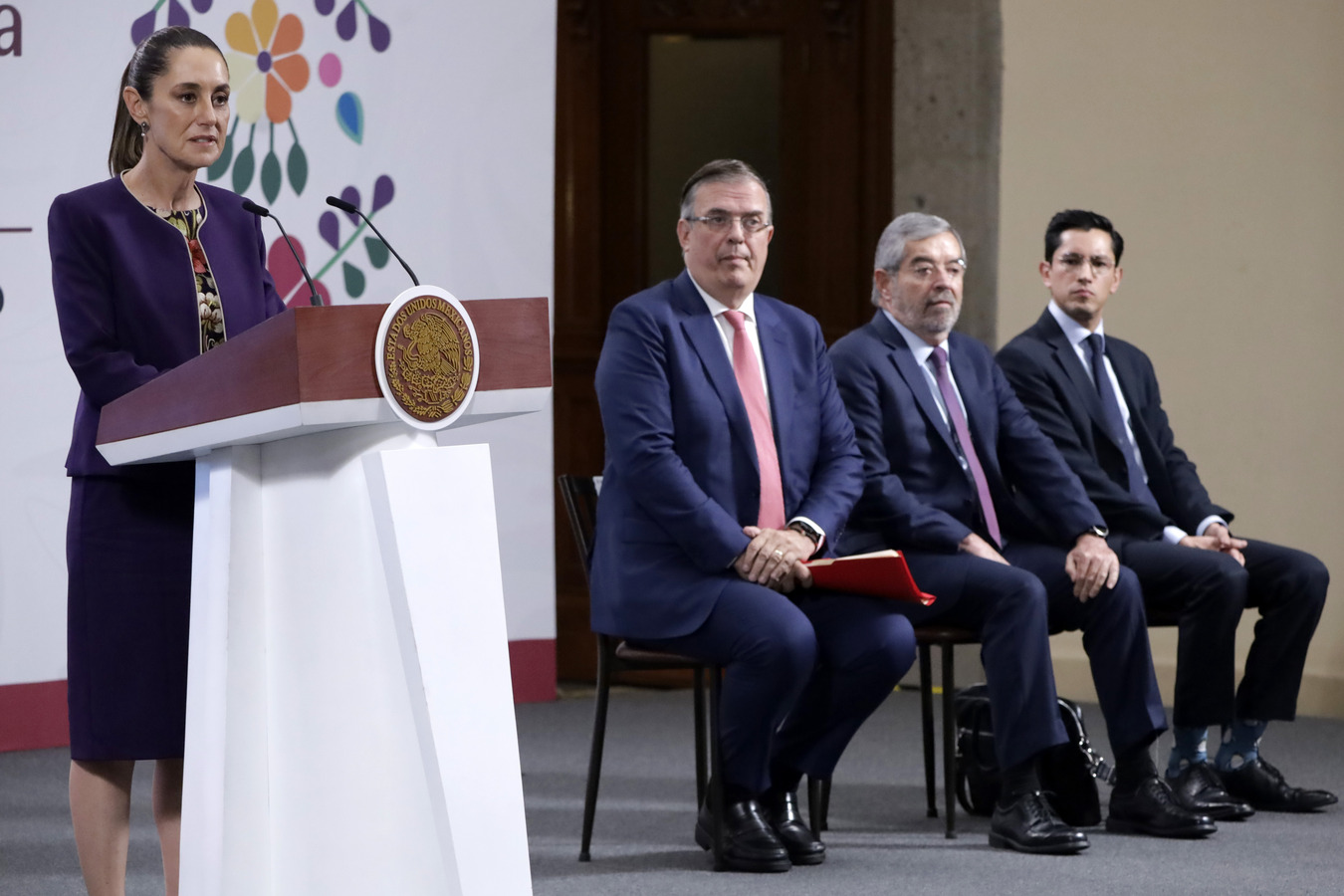Explainer: The Case of the Ongoing Teacher Protests in Mexico
Explainer: The Case of the Ongoing Teacher Protests in Mexico
Why, two years into an education reform, do demonstrations continue? Teacher evaluations have set off a tempest of protests.
It’s been almost two years since education reform became law in Mexico, and yet protests persist. The reform, approved in September 2013, involved a number of goals that ranged from increasing high school graduation rates to merit-based teacher promotions to initiating a census of students and teachers.
The main sticking point, however, is the reform’s launch of evaluation exams, which teachers must undergo at least once every four years and face termination if they fail three times. The National Coordinator of Educational Workers—a teachers union known commonly as the CNTE with around 100,000 members—opposes the reform and has sought legal means to end evaluations. Aside from roiling traffic in the capital on a regular basis via protests, the CNTE is particularly active in poorer southern states, where students missing days of school due to teacher absenteeism does little to reverse weak education results.
One might think the passage of time would lead to a slowdown in discord over this issue, but a recent temporary suspension of evaluations—just before Mexico’s June 7 midterms and when the first set of exams were set to take place—put the issue back in the spotlight.
AS/COA Online takes a look at the state of Mexico’s education system, as well as the latest in the fight over teacher evaluations.
Grading Mexico’s students
Let’s start with the good news: Mexican students are making across-the-board gains in academic performance, per the most recent Organization for Economic Cooperation and Development (OECD) educational survey of 15-year-olds worldwide, conducted in 2012. Not only did Mexico’s pupils make the strongest improvements in math scores among all OECD countries, but the country also stands out as one of the few where both genders improved those scores. Enrollment and graduation rates are also up, as well as the portion of the overall population with high school degrees.
But there’s plenty of bad news as well. The World Economic Forum puts Mexico at 118 out of 144 countries in terms of quality of primary school education. And even if test scores measured by the OECD are going up, they fall on the lower end of rankings. Mexico’s high school enrollment rates stand at just 53 percent, well below the OECD average of 84 percent. This places the country last among OECD members, below the rates of fellow Latin American countries such as Argentina (73 percent), Chile (76 percent), and Brazil (78 percent).
Notwithstanding, a high percentage of Mexican students report being happy in school. So why do so many drop out? One reason is that getting higher levels of education doesn’t guarantee getting a job in Mexico. Another is teen pregnancy: the number of students who graduated from college last year roughly matched the number of adolescent girls who had babies. A third reason comes down to money: 47 percent of women and 50 percent of men said their primary reason for dropping out was that their households lacked the finances necessary to pay for school materials, transportation, and enrollment fees.
The curious case of “ghost” teachers
Even if students don’t have school money, the government is spending the cash; in 2011, education spending stood at 6.2 percent of GDP, just above the OECD average. However, per-student spending is relatively low at primary and secondary levels while a relatively high level of spending is for teacher salaries.
One problem is the very question of where the money goes, with Mexico’s education system tainted by corruption allegations. For example, the Mexican Competitiveness Institute (IMCO) conducted a 2014 report based on the Secretariat of Education’s new census, uncovering, at best, a need for more transparent data and, at worst, information that indicates questionable education spending. For example, the report found that 1,440 teachers on the payroll in the state of Hidalgo were centenarians sharing the same birthday: December 12, 1912. At least 70 teachers earn more than Mexico’s president (whose annual salary is roughly $92,000) and some 91,000 command salaries high enough to place them in the top 10 percent of Mexican earners. Hundreds of teachers hold posts related to working with information technology in schools that have no electricity. And the government spends some $27 million a year on nonexistent “ghost” schools and tens of thousands of “ghost” teachers who don’t show up to work. The Secretariat of Education, the state of Hidalgo, and the main teachers union contested the IMCO study’s findings, while the authors of the IMCO study claim the secretariat began “correcting” the census after the report’s release.
Still, Mexico’s powerful teachers unions are often faulted for their role in protecting teaching positions, allowing them to be purchased or inherited—whether or not those in the posts have the requisite skills. Within a few months of President Enrique Peña Nieto taking office, and just a day after he signed 2013 education reform legislation, his government made a high-profile arrest for embezzlement of the notoriously corrupt leader of the 1.5-million strong Mexican Educational Workers Union (SNTE).
When the education reform and teacher evaluation legislation won congressional approval in September 2013, Mexico’s Education Secretary Emilio Chuayffet heralded it as an end to education-related corruption in teaching posts. “The inheritance and sale of teaching posts is over,” he tweeted. “Merit is the ideal way for access to and advancement in teaching careers.”
Suspended: Teacher evaluations placed on temporary hold
If evaluations are a key aspect of the reform and changing Mexico’s educational path, the decision to suspend them on May 29—days before the country’s June 7 midterm elections—raised eyebrows. The Education Secretariat announced the suspension with a brief message on its website, citing “new elements to consider.”
Many wondered if the reason was to appease protesting CNTE members. “Officials whisper that they are just trying to ensure a trouble-free day of voting and that they will reverse the move later,” reported The Economist. “If that is true, the government is being deeply cynical.” Syndicated columnist Andrés Oppenheimer called the move Mexico’s “worst mistake” in many years.
But if placating the CNTE was the goal, it didn’t work: the union’s leader promptly said the suspension should be made permanent and the reform canceled, along with announcing demonstrations and sit-ins ahead of and during the election. On Election Day, ballots were burned or destroyed in a number of southern states.
Then on June 8, the day after the elections, Chuayffet announced that the first set of evaluations would go ahead as planned, starting with exams for nearly 49,000 registrants in the area of basic education. Between June 20 and 22, nearly 40,000 participated, with results expected at the end of this month with a new body created by the reform and known as the National Institute for Educational Evaluation (INEE) overseeing the process.
Testing continues in July. So will the protests.
Why does opposition to teacher evaluations continue?
Aside from demonstrations, reform opponents also filed 26 injunctions against the evaluations. Even as teachers threatened additional injunctions, Mexico’s Supreme Court threw out all 26 during the week of June 29, arguing that children’s rights to quality education outweigh teachers’ labor rights. The justices backed the reform, ruling that instructors refusing to take part in the evaluation or failing it three times could lose their posts. The court also upheld a rule allowing the sacking of teachers with three days of unexcused absences in a row or within a month—no small thing for members obligated to participate in strikes if they want to remain or advance in their unions.
Teachers unions argue that the evaluations threaten job security and they oppose the testing’s centralized, one-size-fits-all nature. CNTE members from poorer states such as Chiapas, Guerrero, and Oaxaca contend they bear greater responsibility working in rural and indigenous areas struggling with scarce resources. Other opponents say that there is a dearth of training to prepare teachers for the evaluation and that INEE officials admit a lack of consensus on how to define quality education. While much media coverage focuses on demonstrations in these southern states, teachers are taking to the streets in other parts of the country as well.
Meanwhile, many Mexicans are weary of the ongoing sit-ins, school shutdowns, and street blockades and that some striking teachers continue to get paid when they don’t show up in classrooms. But even with school out for summer, the protests are expected to continue; the CNTE warned during June 25 protests, “The storm will become a hurricane.”










